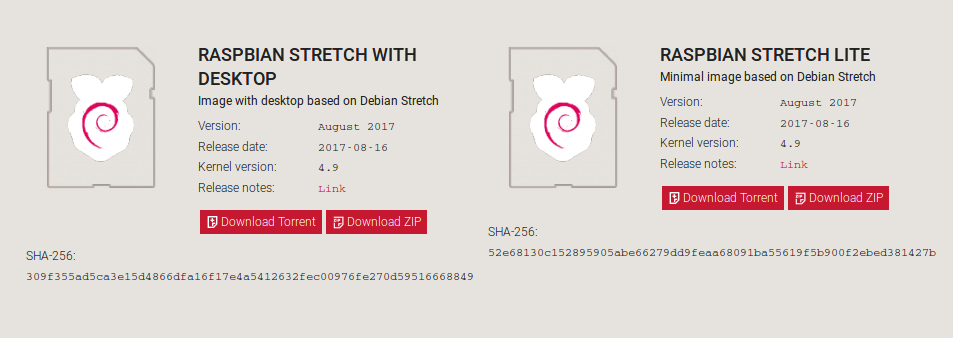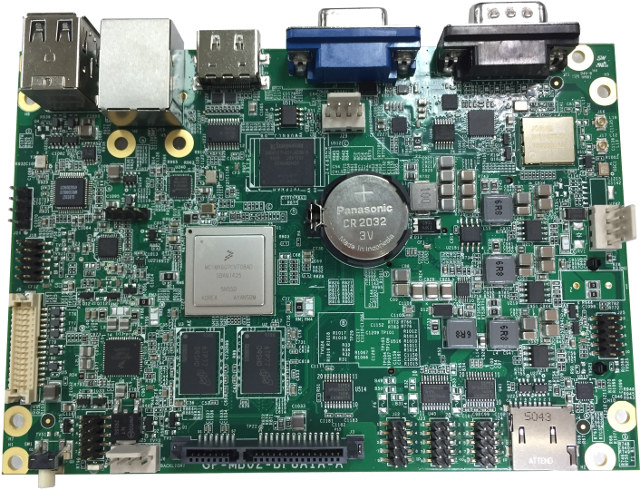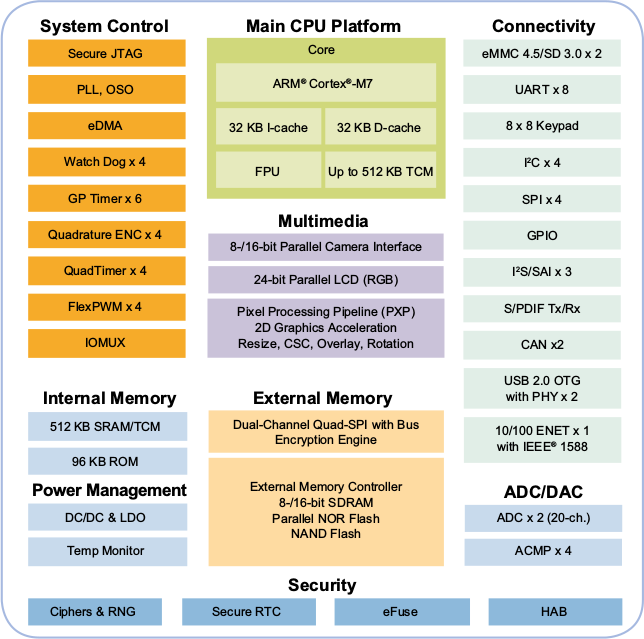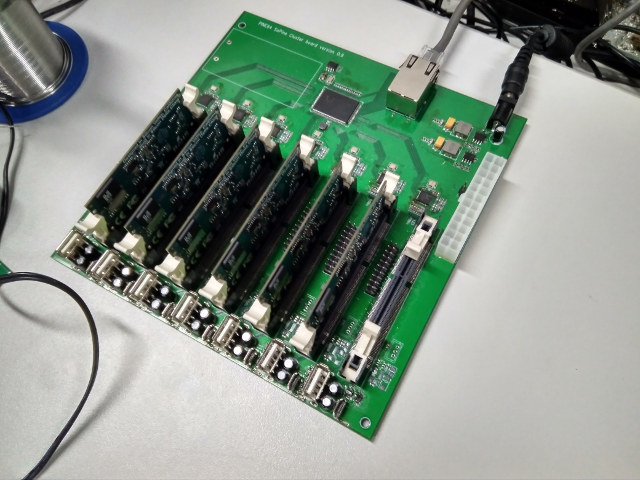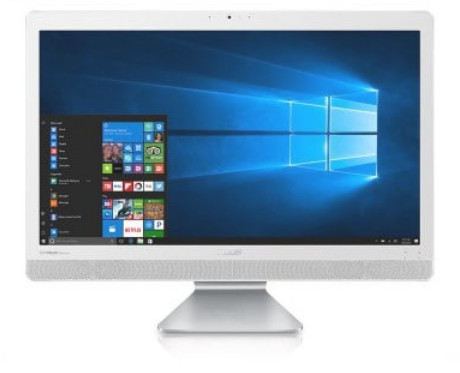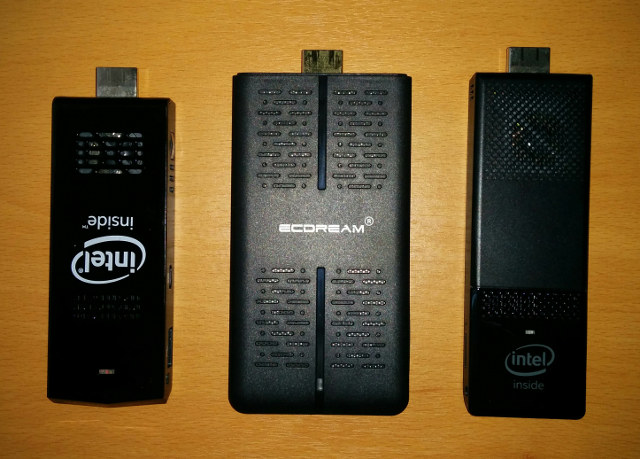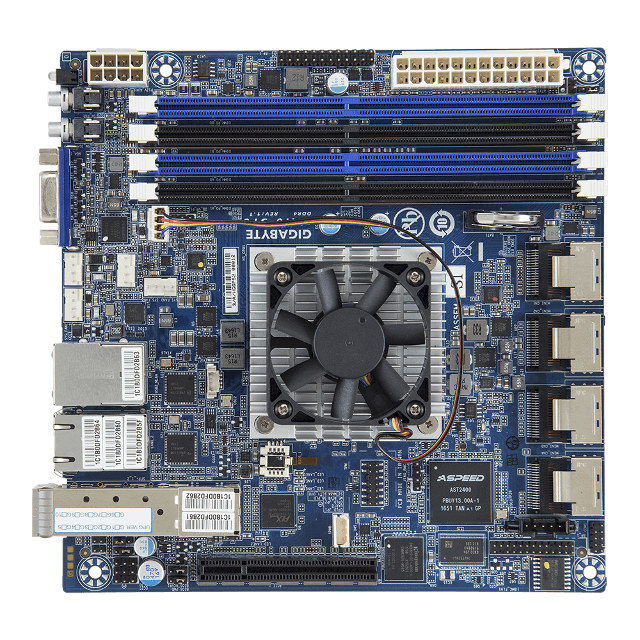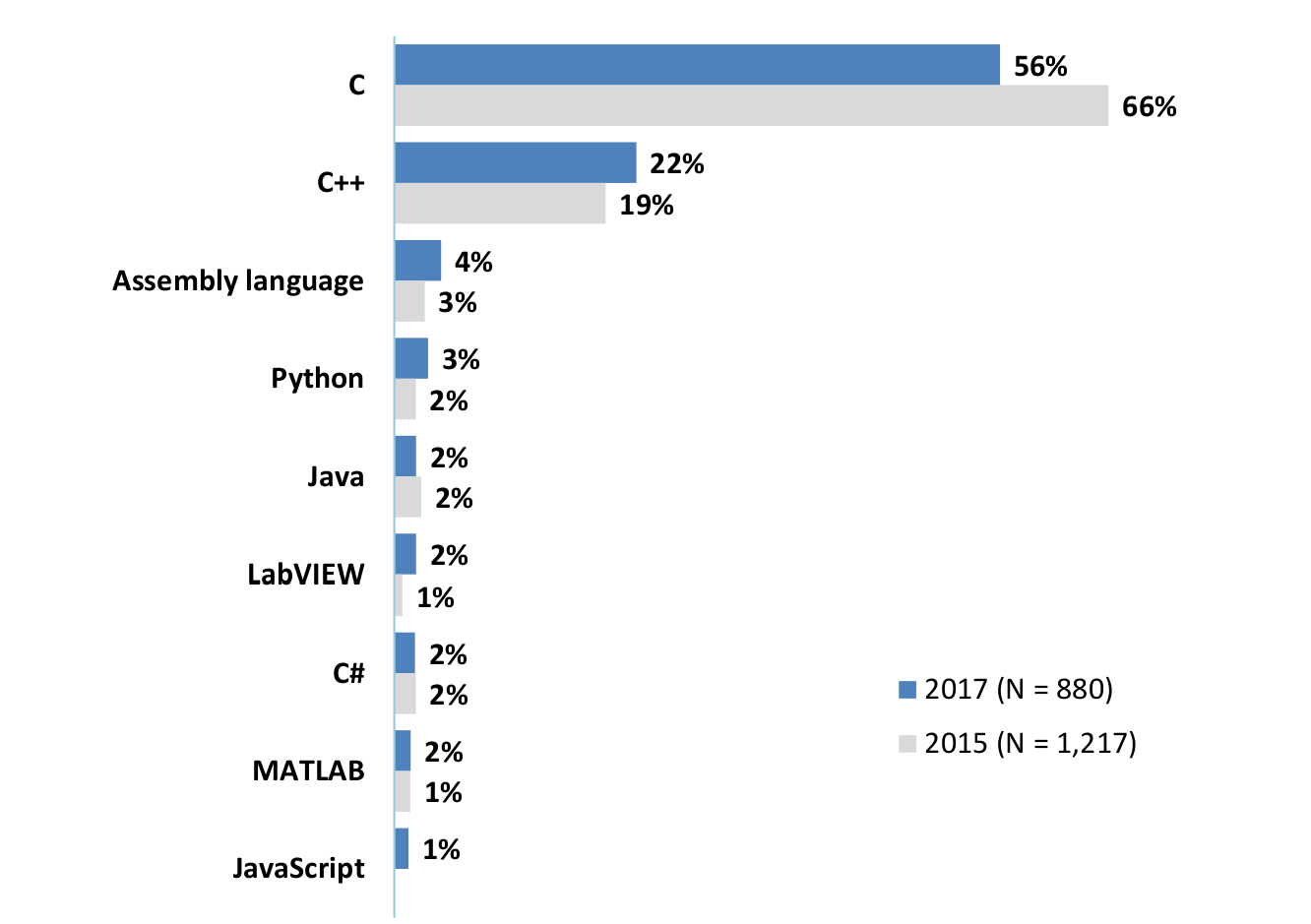While Raspberry Pi boards support many different operating systems, Raspbian is by far the most popular option, and in the last two years the distribution was based on Jessie (Debian 8), the Raspberry Pi foundation has just announced it was now replaced by an update to Stretch (Debian 9). The Jessie version is completely gone from Raspbian Download page, and you’ll only be offered to download “Raspbian Stretch with Desktop” or “Raspbian Stretch Lite”. So what has changed compared to Jessie? Debian 9 changelog will list the main differences compared to Debian 8, but some modifications have also been made in Raspbian itself: Version 3.0.1 of Sonic Pi “Live Coding Music Synth” app – See changelog Chrome 60 stable with improved memory usage and more efficient code Bluetooth audio is supported by the bluez-alsa package by default instead of PulseAudio Better handling of “non-pi users”, as previously many applications assumed […]
NutsBoard Pistachio 3.5″ Embedded SBC is Powered by NXP i.MX 6Dual/Quad Processor
I don’t write about i.MX6 solutions much anymore, since there are so many options available on the market, but Pistachio SBC has been designed by a company I had never heard of before: NutsBoard, and they’ve released documentation and software publicly, which does not always happen in the industrial/embedded space. Pistachio single board computer specifications: SoC – NXP ARM Cortex-A9 IMX6 Quad/Dual @ 800MHz System Memory – Up to 2GB LPDDR3 Storage – 4GB eMMC flash, 1x SATA interface, 1x micro SD card slot Display I/F / Video Output 2x LVDS (6 or 8 bit) 1x 24-bit VGA output 1x HDMI port up to 1920×1080 (FHD) 1x I2C AR1021 touch controller Audio – SGTL5000 audio codec with class D amplifier; 1x audio header for speaker and microphone Connectivity – Gigabit Ethernet (Qualcomm AR8035), industrial grade wireless module (Jorjin WG7833) with dual band WiFi 802.11 a/b/g/n, Bluetooth 4.2 USB – 4x […]
NXP i.MX RT Series Crossover Embedded Processor is Based on an ARM Cortex-M7 Core @ 600 MHz
Microcontrollers (MCUs) provide real-time processing, low power, low cost, and plenty of I/Os, but with security and user interface requirements of recent embedded devices, the processing power may be a limitation, and embedded systems designers may have to use an application processor instead gaining performance, but losing some of the benefits of MCUs. The bridge the gap between performance and usability, NXP has launched i.MX RT series of Crossover Embedded Processor which uses the powerful ARM Cortex-M7 MCU core clocked at up to 600 MHz, a frequency partially made possible by eliminating on-chip flash memory. The first member of the family is NXP i.MX RT1050 with the following key features and specifications: MCU Core – ARM Cortex-M7 @ up to 600 MHz; 3015 CoreMark / 1284 DMIPS Memory – Up to 512KB SRAM/TCM (Tighly Coupled Memory) with response time as low as 20 ns Storage – 96KB RAM; interfaces: NAND, […]
Pine64 SoPine Cluster Board Takes up to Seven SOPINE A64 Systems-on-Module
Pine64 launched SOPINE A64 system-on-module based on Allwinner A64 processor back in January, with such module normally being found in low volume products where companies do not want to spent too many resources developing complex multiple layers boards with CPU and RAM, and instead focus on developing a simpler baseboard and custom software for their product. Pine64 made something else with SOPINE A64 modules: a cluster board. I don’t have the full details yet, but “PINE64 SoPine Cluster Board” comes with 7 SO-DIMM slot designed to take SOPINE64 modules with the board providing a micro USB OTG port, a USB host port, and Ethernet transceiver for each SoM, which are connected to a Gigabit Ethernet switch (initially Marvell 88E6185, but they appear to have now switched to a Realtek part), and accessible via a single Gigabit Ethernet port. Power can be provided by a 5V/10A power supply connected to a […]
Asus WA039T All-in-One PC is Powered by Intel Pentium J4205 Apollo Lake Processor
Intel Pentium N4205 is the most powerful Apollo Lake processor launched by Intel with four cores up to 2.6GHz (turbo), and 18 EU HD graphics, but so far I have not seen many products with the processor, with only ASRock J4205-ITX motherboard and Beebox J4205 mini PC. So I went to Aliexpress, and nothing at all shows up for J4205, I had better luck on Alibaba with Unistorm / ACEPC AK1 mini PC apparently also having Pentium N4205 as an option (for OEM only), and several industrial computer and motherboards. But none of those products seem to be easily purchasable just yet. A final search on GearBest led me to their one and only J4205 based product: Asus WA039T AIO PC, so let’s have a look. Asus WA039T AIO computer specifications: SoC – Intel Pentium J4205 quad core “Apollo Lake” processor @ 1.50 / 2.60 GHz with a 18 EU Intel […]
ECDREAM A9 Apollo Lake HDMI “TV Stick” Review with Windows 10 and Ubuntu 17.04
The ECDREAM A9 is arguably the first Intel Apollo Lake ‘PC stick’ available for purchase. However, in reality it is surprisingly large, and when compared to earlier Intel Atom ‘sticks’ and mini PC ‘boxes’ it lies somewhere in between. Measuring 2.3 inches (58 mm) wide and 0.6 inches (16 mm) thick it feels almost double in size of the original Intel Compute Stick (1.5 in/38 mm by 0.5 in/12 mm) and like nearly half of a mini PC (Beelink’s AP34 is 4.7 in/119 mm by 0.8 / 20 mm). Given that you only get two USB ports, an micro SD card slot and the obligatory HDMI and power port, the large size would be better justified if an Ethernet port had also been included given other smaller ‘sticks’ have shown this is possible. However the reason for its size is due to the oversized fan and heatsink… and that […]
GIGABYTE MA10-ST0 Server Motherboard is Powered by Intel Atom C3958 “Denverton” 16-Core SoC
Last year, we wrote about Intel Atom C3000 series processor for micro-servers with the post also including some details about MA10-ST0 motherboard. GIGABYTE has finally launched the mini-ITX board with an unannounced Atom C3958 16-core Denverton processor. GIGABYTE MA10-ST0 server board specifications: Processor – Intel Atom C3958 16-core processor @ up to 2.0GHz with 16MB L2 cache (31W TDP) System Memory – 4x DDR4 slots for dual channels memory @ 1866/2133/2400 MHz with up to 128GB ECC R-DIMM, up to 64GB for ECC/non-ECC UDIMM Storage 32GB eMMC flash 4x Mini-SAS up to 16 x SATA 6Gb/s ports 2x Mini-SAS ports are shared with PCIe x8 slot Connectivity 2x 10Gb/s SFP+ LAN ports 2x 1Gb/s LAN ports (Intel I210-AT) 1x 10/100/1000 management LAN Video – VGA port up to 1920×1200@60Hz 32bpp; Aspeed AST2400 chipset with 2D Video Graphic Adapter with PCIe bus interface USB – 2x USB 2.0 ports Expansion Slots […]
Aspencore 2017 Embedded Markets Study – Programming Languages, Operating Systems, MCU Vendors, and More
Aspencore media group asked readers of their EE Times and Embedded.com websites to fill out an online survey about their embedded system projects. They got 1,234 respondents mostly from North America (56.3%), followed by Europe (25.2%), and Asia (10.6%). This resulted in a 102-page market study which you can download here. I’ve extracted a few slides to have a look at some of the trends. C language is still the most used language in embedded systems, but other languages like C++, Python and even assembly language are gaining traction. Operating system is more spread with Linux being the most used via Embedded Linux distributions, Debian, and Ubuntu. FreeRTOS comes in second place, while Android registers fourth with 13%. Git has finally supplanted Subversion in 2017, with all other version control software losing ground. Switching to some hardware slides, 44% used a development board to start their embedded design with ST […]


